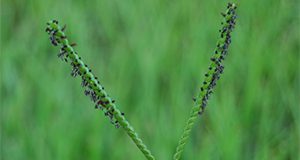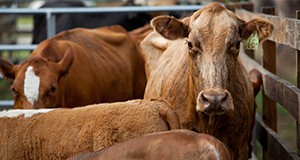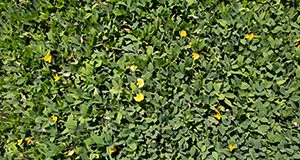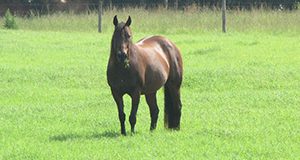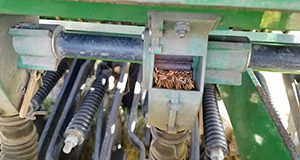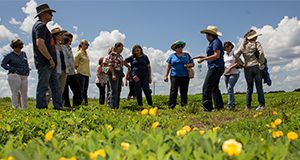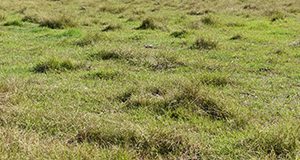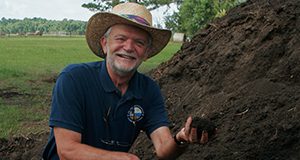Because of its adaptability to Florida's environmental conditions and ability to produce viable seeds, pintoi peanut represents an interesting forage alternative for cow-calf producers in the state. This 5-page document provides current information on pintoi peanut for forage and livestock producers in Florida. Written by Joao M. D. Sanchez, Joao Vendramini, Maria L. Silveira, Jose C. B. Dubeux Jr., Lynn E. Sollenberger, and Philipe Moriel, and published by the UF/IFAS Agronomy Department, November 2020.
https://edis.ifas.ufl.edu/ag445
Tag: Joao Mauricio Buen Vendramini
Bahiagrass (Paspalum notatum Flueggé): Overview and Pasture Management
This 10-page document discusses bahiagrass forage cultivars, forage production, nutritive value, animal performance, planting, pasture renovation, management, and more. Written by Marcelo Wallau, Joao Vendramini, José Dubeux, and Ann Blount, and published by the UF/IFAS Agronomy Department, revised July 2019.
http://edis.ifas.ufl.edu/ag342
Estimating Herbage Mass on Pastures to Adjust Stocking Rate
This new 6-page document explains methods to measure forage mass and utilize that information to estimate an adequate stocking rate. Written by Jose Dubeux, Marcelo Wallau, João Vendramini, Liliane Silva, Jane Griffin, Nicolas DiLorenzo, and Erick Santos, and published by the UF/IFAS Agronomy Department, June 2019.
http://edis.ifas.ufl.edu/ag434
Methods of Forage Moisture Testing
Determining forage moisture is an essential procedure for estimating forage mass in pastures, determining harvesting or baling point for preserved forages, and calculating dry matter of feedstuff for total mixed rations. This 3-page document discusses methods and pieces of equipment available to estimate forage moisture. Written by M. Wallau and J. Vendramini, and published by the UF/IFAS Agronomy Department, revised June 2019.
http://edis.ifas.ufl.edu/ag181
Pastures and Forage Crops for Horses
Florida's unique climatic characteristics allow for forage production most of the year with a large variety of possible forage choices. Independent of the size of the operation and number of horses, good forage planning can help reduce feeding costs, environmental impacts, and nutritional disorders caused by high-concentrate feeding. With the exception of high-performance animals, horses can meet most of their nutritional needs from pasture. However, achieving this requires careful planning and implementation of a forage production and utilization program. This 9-page document discusses intake and nutrient requirements, pasture planning, forage species, and pasture management. Written by M. Wallau, E. L. Johnson, J. Vendramini, C. Wickens, and C. Bainum, and published by the UF/IFAS Agronomy Department, revised January 2019.
http://edis.ifas.ufl.edu/aa216
Calibrating Forage Seeding Equipment
Establishing forages from seeds often requires precision equipment to achieve specific seeding rates for a proper pasture stand. Most pieces of equipment have calibration charts, which are useful guides for making an initial setting. However, due to variations in seed size, purity, moisture content, equipment performance, ground speed, and other factors, calibrating equipment prior to each use is recommended. This 5-page document discusses a few calibration techniques for drills and broadcast spreaders. Written by Marcelo Wallau, Joao Vendramini, and Ed Jennings, and published by the UF/IFAS Agronomy Department, revised November 2018.
http://edis.ifas.ufl.edu/ag158
Strip-Planting Rhizoma Peanut into Grazing Systems
Nitrogen (N) is one of the major off-farm inputs in livestock systems, either in the form of N fertilizer or purchased feed. Fortunately, you can reduce those expenses by growing your own nitrogen using forage legumes. Rhizoma perennial peanut (RPP) is a legume adapted to the Florida environment that grows well in mixtures with bahiagrass. This 4-page fact sheet discusses varieties, establishment, weed management, grazing management, and the cost-share program. Written by Jose Dubeux, Lynn Sollenberger, Joao Vendramini, Marcelo Wallau, Ann Blount, Liza Garcia-Jimenez, Erick Santos, and David Jaramillo, and published by the UF/IFAS Agronomy Department, July 2018.
http://edis.ifas.ufl.edu/ag421
Brunswickgrass or Paspalum nicorae: A Weed Contaminant in Southern Pastures and Bahiagrass Seed Production Fields
Brunswickgrass (Paspalum nicorae Parodi) is becoming a problematic weed in summer perennial grass pastures in the Southeast. The plant is competitive with bahiagrass
and bermudagrass. Since it is less palatable, it can eventually dominate a perennial grass pasture. Brunswickgrass has become naturalized and has reportedly contaminated bahiagrass seed fields and pastures in the southeastern states, including some of the important counties for seed production in Florida, such as Gilchrist, Levy, Alachua, Citrus, and Sumter. This 4-page fact sheet provides an overview of brunswickgrass and discusses its appearance, variety/germplasm, and management. Written by Ann Blount, Marcelo Wallau, Brent Sellers, Dennis Hancock, Leanne Dillard, Jose Dubeux, Cheryl Mackowiak, Joao Vendramini, and Clay Cooper, and published by the UF/IFAS Agronomy Department, April 2018.
http://edis.ifas.ufl.edu/ag408
Micronutrients Considerations for Warm-Season Forage Grass Systems in Florida
 Warm-season grasses are vital to livestock production systems and dominate ground cover in tropical and subtropical areas. The objective of this 7-page publication is to provide basic information about the role of micronutrients in warm-season grass production systems in Florida. Written by Jane C. Griffin, Joao Vendramini, Diane Rowland, and Maria L. Silveira and published by the UF/IFAS Agronomy Department, November 2017.
Warm-season grasses are vital to livestock production systems and dominate ground cover in tropical and subtropical areas. The objective of this 7-page publication is to provide basic information about the role of micronutrients in warm-season grass production systems in Florida. Written by Jane C. Griffin, Joao Vendramini, Diane Rowland, and Maria L. Silveira and published by the UF/IFAS Agronomy Department, November 2017.
http://edis.ifas.ufl.edu/ag419
Utilization of Biosolids in Forage Production Systems in Florida
This four-page publication provides basic information about land application of biosolids to pastures and hayfields in Florida. The information contained in this document should be of interest to stakeholders, biosolids managers, students, and scientists interested in topics related to biosolids management practices and the potential benefits and risks associated with biosolid land application. Written by Maria L. Silveira, George A. O’Connor, and Joao M.B. Vendramini and published by the Department of Soil and Water Sciences.
http://edis.ifas.ufl.edu/ss658
2011 South Florida Beef Forage Survey Results
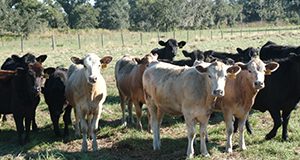 UF/IFAS Extension faculty and state specialists involved in the UF/IFAS South Florida Beef-Forage Program (SFBFP), in conjunction with the UF/IFAS Program Evaluation and Organizational Development unit, created a survey in 1982 that is used to evaluate ranch management practices. The survey is updated and distributed every five years to ranchers in 14 south Florida counties: Charlotte, Collier, DeSoto, Glades, Hardee, Hendry, Highlands, Hillsborough, Lee, Manatee, Martin, Okeechobee, Polk, and Sarasota. There were 102 anonymous responses in 2011. This 6-page fact sheet discusses characteristics of beef operations in south Florida, reproduction, production, marketing, herd health, nutrition, forage production, and environment. Written by Sonja Crawford, Christa Kirby, Tycee Prevatt, Brent Sellers, Maria Silveira, Bridget Stice, Joao Vendramini, and Lindsey Wiggins, and published by the UF Agronomy Department, October 2016.
UF/IFAS Extension faculty and state specialists involved in the UF/IFAS South Florida Beef-Forage Program (SFBFP), in conjunction with the UF/IFAS Program Evaluation and Organizational Development unit, created a survey in 1982 that is used to evaluate ranch management practices. The survey is updated and distributed every five years to ranchers in 14 south Florida counties: Charlotte, Collier, DeSoto, Glades, Hardee, Hendry, Highlands, Hillsborough, Lee, Manatee, Martin, Okeechobee, Polk, and Sarasota. There were 102 anonymous responses in 2011. This 6-page fact sheet discusses characteristics of beef operations in south Florida, reproduction, production, marketing, herd health, nutrition, forage production, and environment. Written by Sonja Crawford, Christa Kirby, Tycee Prevatt, Brent Sellers, Maria Silveira, Bridget Stice, Joao Vendramini, and Lindsey Wiggins, and published by the UF Agronomy Department, October 2016.
http://edis.ifas.ufl.edu/ag410
Environmental Impact of Beef Cattle Production Systems
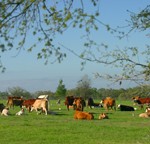 This 6-page fact sheet discusses beef demand in the context of a growing population, beef production’s greenhouse gases and their effect on the environment, the great advantage of ruminants, generating accurate greenhouse gas emissions estimates, greenhouse gas emissions by economic sector, and mitigation strategies. Written by Nicolas DiLorenzo, G. Cliff Lamb, Jose Dubeux, John Arthington, Joao Vendramini, and Phillip Lancaster and published by the UF/IFAS Department of Animal Sciences, November 2014. (UF/IFAS Photo by Thomas Wright)
This 6-page fact sheet discusses beef demand in the context of a growing population, beef production’s greenhouse gases and their effect on the environment, the great advantage of ruminants, generating accurate greenhouse gas emissions estimates, greenhouse gas emissions by economic sector, and mitigation strategies. Written by Nicolas DiLorenzo, G. Cliff Lamb, Jose Dubeux, John Arthington, Joao Vendramini, and Phillip Lancaster and published by the UF/IFAS Department of Animal Sciences, November 2014. (UF/IFAS Photo by Thomas Wright)
http://edis.ifas.ufl.edu/an302
2014 Cool-Season Forage Variety Recommendations for Florida
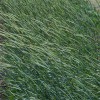 This 4-page fact sheet provides the most up-to-date information on current adapted varieties of cool-season forages. The recommendation of varieties is based on multi-location, multi-year cultivar evaluation experiments that may include trials in Georgia and other states. Table 1 includes information about the planting dates, seeding rates, and other considerations. If you have questions about a particular variety, contact your local UF/IFAS Extension agent for additional information. Written by A. R. Blount, J. M. B. Vendramini, J. C. B. Dubeux, Md A. Babar, K. E. Kenworthy, P. R. Muñoz,and K. H. Quesenberry, and published by the UF Department of Agronomy, September 2014. (UF/IFAS Photo: Josh Wickam)
This 4-page fact sheet provides the most up-to-date information on current adapted varieties of cool-season forages. The recommendation of varieties is based on multi-location, multi-year cultivar evaluation experiments that may include trials in Georgia and other states. Table 1 includes information about the planting dates, seeding rates, and other considerations. If you have questions about a particular variety, contact your local UF/IFAS Extension agent for additional information. Written by A. R. Blount, J. M. B. Vendramini, J. C. B. Dubeux, Md A. Babar, K. E. Kenworthy, P. R. Muñoz,and K. H. Quesenberry, and published by the UF Department of Agronomy, September 2014. (UF/IFAS Photo: Josh Wickam)
http://edis.ifas.ufl.edu/aa266
Nutrient Cycling in Grazed Pastures (SL376/SS578)
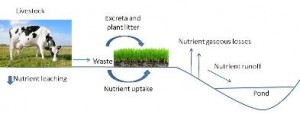 Many forage-based livestock production systems in Florida are characterized by extensive grazing with minimal inputs of commercial fertilizer and supplemental feed. In these systems, adequate soil fertility conditions are essential to sustain forage production. If nutrients become deficient, pasture and animal performance is reduced, and the economic returns of livestock operations may decline. This 3-page fact sheet discusses the different nutrient pathways in grazing pastures to help producers better understand how to promote nutrient cycling and pasture sustainability. Written by Maria L. Silveira, Joao M. B. Vendramini, Hiran M. da Silva, and Mariana Azenha, and published by the UF Department of Soil and Water Science, January 2013.
Many forage-based livestock production systems in Florida are characterized by extensive grazing with minimal inputs of commercial fertilizer and supplemental feed. In these systems, adequate soil fertility conditions are essential to sustain forage production. If nutrients become deficient, pasture and animal performance is reduced, and the economic returns of livestock operations may decline. This 3-page fact sheet discusses the different nutrient pathways in grazing pastures to help producers better understand how to promote nutrient cycling and pasture sustainability. Written by Maria L. Silveira, Joao M. B. Vendramini, Hiran M. da Silva, and Mariana Azenha, and published by the UF Department of Soil and Water Science, January 2013.
http://edis.ifas.ufl.edu/ss578
Forage Planting and Establishment Methods (SSAGR161/AG107)
 Establishment of an excellent, uniform stand of forage in a short period of time is important. The producer needs to do everything possible to ensure successful establishment. Several requirements that must be met are briefly discussed, along with various planting methods. This revised 8-page fact sheet was written by Y.C. Newman, J. Vendramini, C.G. Chambliss, M.B. Adjei, and published by the UF Department of Agronomy, April 2011.
Establishment of an excellent, uniform stand of forage in a short period of time is important. The producer needs to do everything possible to ensure successful establishment. Several requirements that must be met are briefly discussed, along with various planting methods. This revised 8-page fact sheet was written by Y.C. Newman, J. Vendramini, C.G. Chambliss, M.B. Adjei, and published by the UF Department of Agronomy, April 2011.
http://edis.ifas.ufl.edu/ag107
Creep Grazing for Suckling Calves: A Pasture Management Practice (SSAGR211/AG193)
The concept of creep grazing is based on the fact that the nutritional requirements of suckling calves are much higher than those of cows. Calves creep grazing on high quality forage that provides high intake of digestible energy and protein make extra growth while the cows are grazing lower quality pasture. Learn more in this revised 4-page fact sheet was written by Y.C. Newman, D.E. Mayo, J. Vendramini, and C.G. Chambliss, and published by the UF Department of Agronomy, March 2011.
http://edis.ifas.ufl.edu/ag193
Mulato II (Brachiaria sp.) (SSAGR303/AG310)
Mulato II is a semi-erect perennial apomictic grass that can grow up to 9 ft tall. Brachiariagrasses, including Mulato II, are tropical warm-season forages native to Africa and are the most widely grown forages in tropical South America. This 4-page fact sheet describes teh morphology, region of adaptation and growing season in Florida, recommended production practices, and the results of research into the performance of heifers grazing Mulato. Written by J. Vendramini, B. Sellers, L.E. Sollenberger, and M. Silveira, and published by the UF Department of Agronomy, March 2011.
http://edis.ifas.ufl.edu/ag310
Production of Biofuel Crops in Florida: Switchgrass (SSAGR291/AG296)
Nationwide, switchgrass is recommended for biofuel production because of its wide range of adaptation and high potential dry matter yield with relatively low fertility input. It can be used for both lignocellulosic ethanol production and in electricity generation, complementing coal as a co-firing agent supplement. Less is known about switchgrass production in Florida than other biofuel crops. This 4-page fact sheet describes the biofuel potential, biology, production, potential yields, production challenges, estimated costs, and environmental concerns. Includes references. Written by Yoana Newman, Mary J. Williams, Zane Helsel, and Joao Vendramini, and published by the UF Department of Agronomy, March 2011.
http://edis.ifas.ufl.edu/ag296
SSAGR337/AG347 Pearl Millet (Pennisetum glaucum): Overview and Management
SS-AGR-337, a 6-page illustrated fact sheet by Yoana Newman, Ed Jennings, Joao Vendramini, and Ann Blount, describes this drought-resistant summer forage crop — plant description and adaptation, history and released cultivars, yield, nutritive value and antiquality factors, site selection, planting date and seeding rates, management, and utilization. Includes references. Published by the UF Department of Agronomy, September 2010.
http://edis.ifas.ufl.edu/ag347
SSAGR59/AA197 ‘Callide’ Rhodesgrass
Revised! SS-AGR-59, a 4-page fact sheet by J. Vendramini, A. Blount, Y. Newman, C. G. Chambliss and M. B. Adjei, describes this robust, warm-season perennial grass native from Africa, useful in southern Florida for fall and winter grazing — establishment, management of established stands, and pests. Includes references. Published by the UF Department of Agronomy, March 2010.
http://edis.ifas.ufl.edu/aa197

